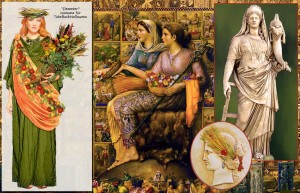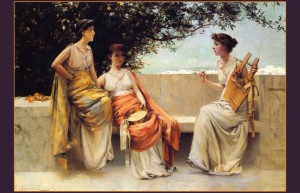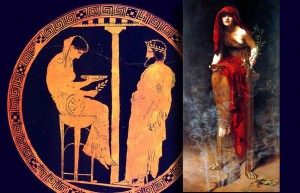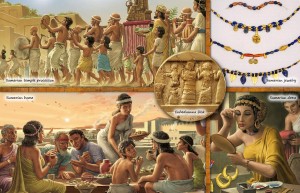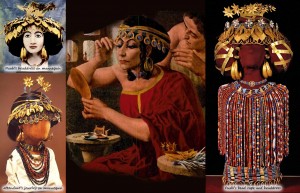Bedsheet costumes
We were thinking about doing this closer to Halloween, but the awesome shout-out today from The Mary Sue (thank you!) prompted us to go ahead and post it now: bedsheet costumes. That’s right, costumes you can make with a bedsheet.
The reason you can get away with using a bedsheet for ancient costumes is because an awful lot of ancient clothing wasn’t sewn. The Greeks, for example, wore a chiton, which was just a length of cloth wrapped around the body and pinned at the shoulders. The Greek chiton became the jeans-and-T-shirt of the classical world, with even “barbarians” in the north (like the Celts) wearing a version of it. And before that (way before that) there were the Sumerians and Akkadians, who wore a big rectangle of cloth wrapped in a spiral around the body and draped over the left arm.
All these outfits do call for some extra accessories, but the basic garment is a bedsheet:
 Athena, above, Greek goddess of wisdom and civilization.
Athena, above, Greek goddess of wisdom and civilization.
Demeter, above left, Greek goddess of agriculture and the bountiful earth, mother of Persephone.
Persephone, above right, Greek goddess of the Underworld and of spring rebirth, daughter of Demeter.
Sappho (ca. 620-570 BCE), above left, the world’s first great love poet.
Themistoclea (6th century BCE), above right, philosopher and priestess at Delphi who taught Pythagoras.
Boudicca (died around 61 CE), above left, kick-ass British queen who fought a war of resistance against the Romans.
Zenobia (240–274?), above right, kick-ass Syrian queen of Palmyra who conquered Egypt and also fought the Romans.
Enheduanna (ca. 2300 BCE), above left, Sumerian-Akkadian poet and the first known author in the history of human civilization.
Puabi (ca. 2600 BCE), above right, queen in ancient Sumer around the time of the First Dynasty of Ur—before the pyramids in Egypt had even been built.
P.S. If you’re on Pinterest, check out our Bedsheet Costumes board.
UPDATE: And one more!
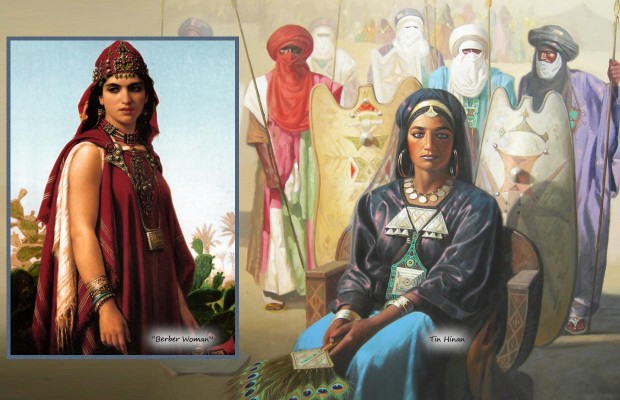 Tin Hinan (4th century), above, legendary queen and founding matriarch of the Tuareg people.
Tin Hinan (4th century), above, legendary queen and founding matriarch of the Tuareg people.

